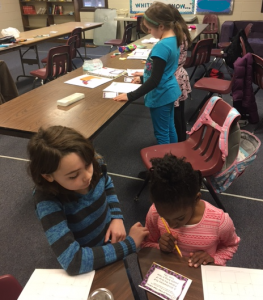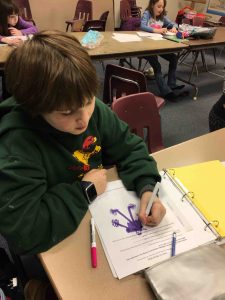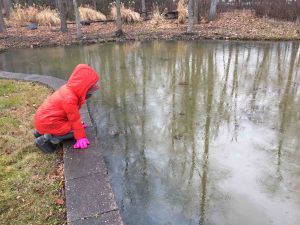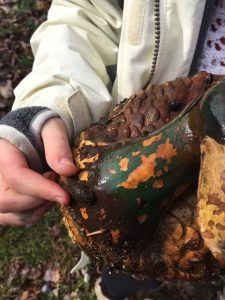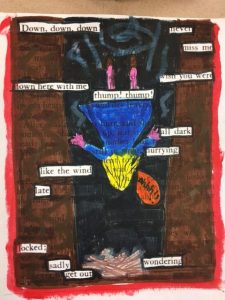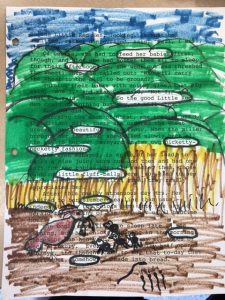Our Tortoise group enrolls 3rd through 5th graders. These students so named because they are wise and quicker than some may think. Here is an overview of a typical class for this group as summarized by the instructor in the weekly email sent to parents.
Affirmation: I am powerful
Objectives:
*Learners will watch a short video highlighting the relationship between tone and mood.
*Learners will show their understanding of tone and mood by displaying their drawing of a brain (tone) or a heart (mood) when they hear a matching descriptor
*Learners will read or listen to the story of The Little Red Hen while drawing the images in their mind
*Learners will identify tone words in a text and use them to draw a picture indicating the mood
*Learners will write a journal entry describing the difference between tone and mood
We enjoyed our time together by delving deeper into the symbiotic relationship between tone and mood. In an attempt to make the featured video more interactive, I paused right before particular answers were revealed so that students could practice their identification skills.
When it was time for the story, I once again gave students the choice between listening to or independently reading it. Next, I focused their attention on one page of the text so that they could apply their tone and mood knowledge. First, I showed them an example of a drawing I had done with text from Alice in Wonderland. I purposely chose a different story because I have found that when I show samples, students try to imitate exactly what I have done. For this activity, though, I really wanted them to use their own creativity and synthesizing skills to make the drawing their own. In fact, one of the students finished her work before the others and asked if she could do a similar activity with the Alice in Wonderland text, and she copied exactly what I did.
I used my sample to show students how to box words that indicated the author’s tone. Next, I told them to use the story and the boxed words to understand the mood of the passage and to draw a scene of it right over the words. The open ended nature of this assignment was challenging for them, but once they got started and their confidence grew, they enjoyed selecting words and coloring over others. In the excerpt I provided, the Little Red Hen was noticeably tired and overwhelmed by doing all the work herself, so I expected students to identify a negative tone and mood. However, one of the children zeroed in on the author’s depiction of the hen as a loving, caring mother to her chicks. Consequently, she boxed “feed her babies,” “afternoon,” “So the good Little Red,” “beautiful,” “picketypeckety fashion,” “little fluff balls,” “slumbering,” “indeed,” and “morning.” This student’s unexpected perspective was a reminder to all of us that great literature has layers of meaning. Thus, there is no one way to interpret art.
At closing circle, one of the students stated that her favorite part of the class was drawing on the text. She said, “What are those things called?” I told her that they really didn’t have a name, so another student suggested we call them “colorins.” I loved that idea, so we will now refer to them by their new name from now on.
Finally, when we went outside for nature observation, we were excited to return to the pond to see if the plastic duck we had found last week was still there. It was! When we pulled it out of the water, we discovered that snails had attached themselves to the bottom of it. We enjoyed examining these unexpected surprises of nature on something as unnatural as a manufactured plastic duck.
Next week will be the last class of the Mood Unit. We have discovered the topic through the lens of Focus Studies, Art, Science, and Language Arts.

